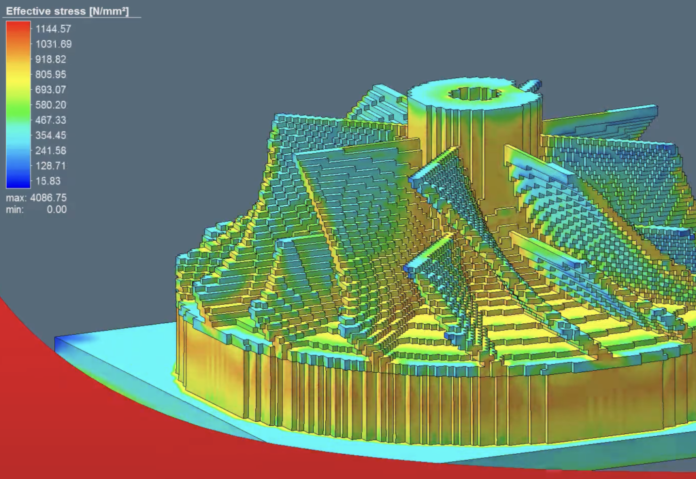Hexagon, a global company that provides digital reality solutions, combining sensor, software and autonomous technologies, is working with aerospace company Raytheon Technologies to provide industries with a simulation tool that will enable evaluation and optimisation of metal additive manufacturing (AM) processes. To do so, the software tool would predict thermal history and defect at the laser path and powder layer scale.
Raytheon’s R&D efforts span multiple industries and technologies but the company’s strong utilization of AM in the aerospace industry has enabled the team to build up extensive expertise in AM software. Two years ago for instance, as part of a Project Call launched by America Makes, the Raytheon teams (that included experts from its Intelligence and Space, Missiles and Defense, and Research Center divisions) proposed the development of a revised LPBF software workflow. The latter would enable to easily create topologically optimized ‘exotic designs’ with conventional additive materials.
“We’ve partnered with Raytheon Technologies to deliver an intuitive and accessible tool that will help engineers quickly predict and mitigate risks,” said Jeff Robertson, Hexagon’s director of global business development. “The ability to evaluate full laser powder bed fusion (L-PBF) parts on the meso-scale will reduce the effort to achieve part certification and thereby support industrialisation of metal 3D printing.”
The fact is, designers and engineers often look to evaluate the print outcome and test combinations of materials, geometries, and print processes. The software solution developed by Hexagon and Raytheon Technologies will complete Hexagon’s existing Simufact Additive tool. The similarity to the existing user interface will allow easy integration into existing manufacturing processes by users without the need for extensive training.
Available as part of its Simufact Additive program, the Simufact Additive tool aims to enable metal 3D printer users to slash time spent on testing, by simulating builds before they’re printed. Compatible with LPBF, Direct Energy Deposition (DED) and binder jetting technologies, the platform takes a multi-scale approach to address issues that range from mechanical checking to full thermal-mechanical transient analysis.
“By combining our additive manufacturing expertise with Hexagon’s we’re bringing a solution to market that helps manufacturers with all levels of experience make better products with greater efficiency,” said David Furrer, Pratt & Whitney senior fellow for materials and processes.
Remember, you can post job opportunities in the AM Industry on 3D ADEPT Media free of charge or look for a job via our job board. Make sure to follow us on our social networks and subscribe to our weekly newsletter : Facebook, Twitter, LinkedIn & Instagram ! If you want to be featured in the next issue of our digital magazine or if you hear a story that needs to be heard, make sure you send it to contact@3dadept.com






